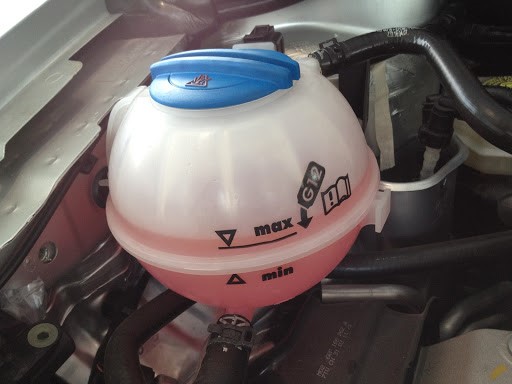Going on a road trip is the most fun and engaging way of going on a holiday. Instead of being on a cramped airplane for a good amount of hours, accompanied with crying babies and turbulence, road tripping is challenging and takes you through scenery you’ve never seen before. Together with your mates, you get to experience the real holiday spirit, and see things you’ll never ever forget.
The only real downside with road tripping, is the fact that it can be quite costly. As a student, driving, insuring and maintaining a car is very expensive, and that alone puts many of us, students, off in going on a roadtrip. With my stories, tips and tricks, even you and your friends can go on a challenging, breathtaking and memorable roadtrip through all of Europa (and further, if you wish) without spending more than the total amount spent on airplane tickets!
The first step in going on a road trip, is the journey, duh! Where do you want to go, how far do you and your friends dare to drive and in what timeframe?
For me, those questions were easy. Back when I was 17 years old, I set myself a target; i wanted to roadtrip to Germany with 3 friends. First stop would be Berlin, then Leipzich, then München and then, as a piece de la résistance, the Nürburgring Nordschleife. Since I was interested in the history of Germany in the previous century, and was very much looking forward to the copious amounts of Weissbier, bratwursten and schlagersmusic, my goal was to take a 2 week roadtrip-holiday.
Since I am a beer-loving student, money was always shorthanded, and with my Saturday-warehouse-job I earned not nearly enough to save a lot for holidays. Besides ´Ome Duo´ (a very famous and ‘generous’ ‘uncle’ in the Netherlands.. Study financing..), no-one was going to loan me and my friends money for our trip. Buying a set of airplane-tickets 3 months prior would set us back around 1500 euros for the 4 of us, and so, we figured buying a ramshackle car for around that budget including roadtax, insurance and gas would be our best investment. If we would not wreck of break the car (which was quite possible), we could sell it to recoup some / all of the amount we paid for it.
Our deal!
In our case, we e nded up with a Nissan Primera 1.8 petrol silver estate car from 2006, for a woppin’ 400 euros! Sure it had its flaws, wasn’t looking the freshest, had 250.000 kilometers of pure abuse behind its ugly back, and was terribly slooooooow, but hey! The car was very, very reliable the entire trip around, with nice cold aircon, great sounding speakers and a ridiculous amount of storage space in the boot.
nded up with a Nissan Primera 1.8 petrol silver estate car from 2006, for a woppin’ 400 euros! Sure it had its flaws, wasn’t looking the freshest, had 250.000 kilometers of pure abuse behind its ugly back, and was terribly slooooooow, but hey! The car was very, very reliable the entire trip around, with nice cold aircon, great sounding speakers and a ridiculous amount of storage space in the boot.
The only real downsides were the pretty bad oil consumption and terrible gas milage. Every 500km about 50 liters of petrol and 1 liter of oil had to be added, which was fine really. In Germany, gas is relatively cheap and we prepared ourselves with 10 liters of the cheapest oil we could find.
MOT, insurance and road tax.
When we were looking for our silver monster, we kept a couple of mandatory things in our mind, which you should too:
- APK/MOT
The most important thing; every car has to have APK / MOT. In our case for at least the period of our vacation and, if possible, longer.
MOT or APK is short for ‘Ministry of Transportation’ or ‘Algemene Periodieke Keuring’ and entails a yearly check regarding the environmental aspects and overall safety on any car. This is required, and cars with failed / expired MOT certificates will automatically be banned from public roads, including costly fines. Besides that, your car is unsafe to perform on public roads, and is definitely not a vehicle you and your friends want to be in, flooring it on the autobahn. Be sure to check when the certificate expires, and what the possible rejection points will be.
Most of the time a car fails inspection because of simple, little things such as a defective lightbulb or worn wiperblades which you can easily change yourself at home. Keep in mind that there are a lot more inspection points on which your car can fail, for example worn / damages tires and worn brakes.
When you want to look at a car, be sure to try every function, light, button or handle on the car and inspect the obvious things; is there enough thread on the tires, no bulges on the sides and no cracks on the side? Take somebody with you that can globally inspect your car for some of these points, or let a garage perform a pre-purchase inspection if you’ll be planning to keep the car for a longer period of time.
- Insurance
Even though we all think we are the best drivers, an accident is right around the corner, and for everyone’s wellbeing and ease, it is best to have your car insured. Besides that, insurance is mandatory in almost all countries in Europe, which is actually a good thing.
Beware of the fact that insurance at our age (18 to 25) can be very, very high. Students are a high-risk group, and insurance companies don’t really like to insure us. Some of those companies even exclude everyone below a certain age or specific car (because of horsepower, weight, age, possible theft, price etc etc).
It really pays off to take the time and check out the first 10 pages on Google, before seeing or buying a car. The prices will vary significantly between different providers, and some insurers are surprisingly cheap compared to others. Just try to fill in as much quote-forms from different companies and write down the prices / links so you can make sure you can find those back. Take the conditions in account, but most of the time those are quite forgiving and corresponding with others.
Some students insure their cars via their parents, which is also possible but not recommendable. Besides the fact that you don’t collect claim-free years for yourself, if you cause a collision your parents will lose their claim-free years and will pay significantly more as a result of that.
What a lot of people don’t know, is the fact that cars older than 25 years come in qualification for ‘old-timer insurance’. This is a special insurance option, given out by a couple of companies for cars that reached a certain age. The advantage of that, is that old, relatively ‘worthless’ cars, are insured for very little, sometimes as little as €10 per month. Check before purchasing whether or not your ‘whip’ is eligible for this special insurance, as these can be very cheap and interesting for especially students.
- Road tax
Every car on the road has to pay road tax, unfortunately. This is a tax meant for maintaining roads, highways and compensation for environmental damage. The price mostly depends on what car you drive, and what the requirements of your country are for specific properties, such as weight, pollution and fuel.
General rule of thumb is that, how heavier your car is, the more expensive it will be. Diesel and Autogas (LPG) are significantly higher than patrol cars, but each has its own perks. Autogas or LPG (Liquid Propane Gas) is per liter/gallon way cheaper than gas or diesel, and could save you money if you drive enough miles.
You can check the price per month/yearly by filling in forms on the website of the tax-administration bureau.
Be aware; you will automatically be registered to this bureau when you buy and tag the car on your name. When you decide to sell the car, the road tax that you have paid too much will be settled.
Getting your car ready; what do you need to do?
After you got everything sorted with your insurance, MOT certificates and road tax, its time to face the real facts and get buzzin’! What do you need to do, in order to be prepared for your roadtrip?
- Read into the laws and rules of the country/country’s that you want to visit.
For example, some require specific documentation or particularities such as a breathalyzer, toll road registrations, an TomTom drivers system without radar-detection, environmental badges or an emergency tool kit. Not carrying those items when mandatory, could lead to high fines when pulled over by authorities.
Also check if your fuel type is supported in other countries. Some don’t sell specific fuels and/or have bad quality gas that will affect the engines power/ running conditions.
- Service / maintain your car
Always be prepared when going on a roadtrip! It doesn’t matter how much you prepare for such a journey, it is almost inevitable that something is going to break and you’ll have to fix it. A challenge on its own, that you and your mates have to tackle right on the spot.
Before you decide to drive off, it is very important to check a few easy things that will prevent big trouble later on:
- Check your oil level!

You can do this by pulling out the dipstick in the engine-bay, wiping it clean, inserting it once again and pulling it out. There are 2 indications on the dipstick that tell you what this level is. The oil line is, if everything is good, between those 2 markings; that is perfect. Is it lower than the ‘minimum’ mark? Add some oil until the level is correct, and keep checking it during the trip to make sure you will never run out of oil. Running your car without oil will ruin your engine withing seconds, so keep it up to snuff, student!
- Check your tire pressures!
You can check those at almost every gas station for free. Look up your tire specifications and fill the tires up to the right pressure. This will improve gas milage, prevent premature wear, provide better grip, lower tire-noise and more.
- Check your coolant level

Without sufficient cooling, your car can run hot and potentially leave you and your mates stranded on the side of the road. Its important to check the coolant level before going on a trip, just to be sure you don’t run out. Look at the markings on the coolant-reservoir, somewhere between “Min and “Max” is perfect. The coolant should have a clear and bright color (pink, lightgreen, blue), without any discoloration. Be sure not to twist off the reservoir cap when the engine is warm, as the cooling system might be under pressure.
Tools
Make sure you always have a emergency toolkit with you, at least containing:
- a jack including a spare wheel/tire
- A automatic/manual tire pump
- a couple of screwdrivers,
- a couple of pliers,
- some rags,
- a set open-end wrenches,
- a roll of duct tape
- a bag of tie wraps (duh!)
All these things can be bought at online shops at great discounts, especially for students like you and me. Be sure to sign up for our newsletter, so that we can notify you for the best deals!
{{cta(‘ed11842e-6d18-4e66-b645-3b70b01a17a0’)}}
Also make sure you have a supply of the right oil and coolant with you for emergencies. You might not need it, but it is best to carry it with you, just in case. Ask your local supplier for the right products, as ‘oil’ for instance, exists in 1000 different varieties.
Having said all this, I am certain you will succeed in obtaining your road trip goals! Be careful on the roads, as driving sometimes can be a challenge, even though this makes driving rightfully more fun! Don’t forget, as I told you earlier on in this blog, to insure, tax and MOT the car before going on a trip, and never forget to check the fluids before driving off into the sunset, rain or whatever.
If you have any questions, criticisms or concerns, feel free to place them underneath in the comment box. As always, enjoy your holiday as much as you can! Thanks in regards.




Leave a reply